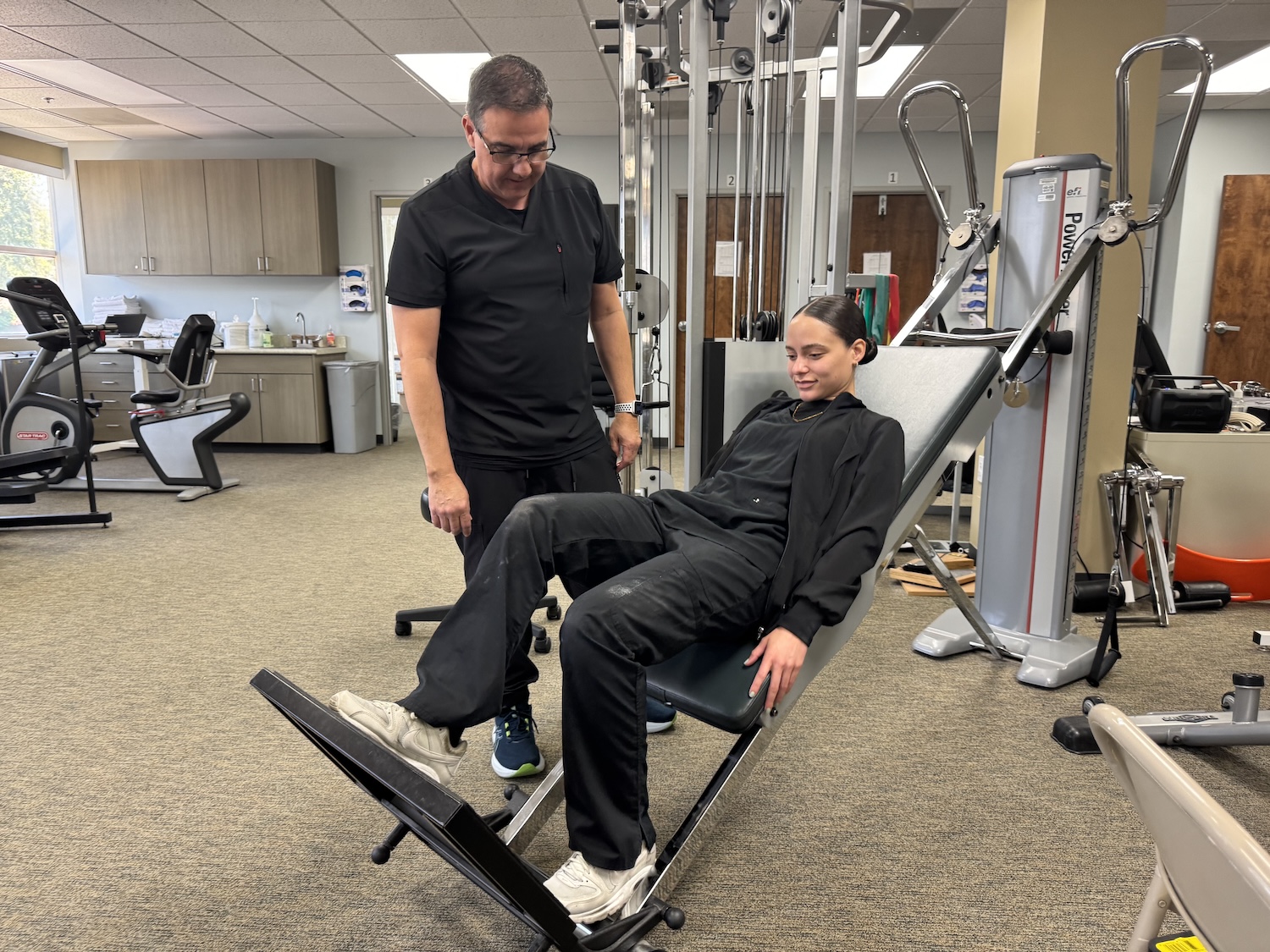

PT is essential in rehabbing old and new injuries, as well as aiding surgery recovery.
Physical therapy (PT) isn’t just for athletes or post-surgery patients. From a twisted ankle to regaining strength after a stroke, PT is a vital part of recovery, pain management, and overall physical health.
Doctors recommend PT to patients for a variety of reasons, including:
-
Recovery after surgery
-
Injury rehabilitation for sprains, strains, fractures, or dislocations.
-
Chronic pain management
-
Post-stroke rehabilitation
-
Postural correction
-
Management of neurological disorders
For those who have some form of pain or injury, doctors often prescribe PT as a first line of defense to address pain, improve mobility, and avoid the need for more aggressive treatments like surgery.
Whether a patient is dealing with an old injury that never healed quite right, coping with age-related joint issues, or trying to avoid surgery through conservative treatment, Eric Lewis, a physical therapist at Loma Linda University Health, says that PT plays a crucial role in helping you move better, feel better, and live better.
"Physical therapy is often the first step in conservative management to see if it can help bring someone back to their prior level of function or better,” Lewis explains.
“For post-surgical patients, PT is often the longest part of recovery. Even with a perfect surgery, without proper rehab, outcomes can fall short."
Whether it's rehabbing an injury, trying to avoid surgery, or post-surgical care, PT plays a key role in helping people heal and return to their normal activities.
Understanding the role of PT
In most cases, patients tend to fall into one of two categories when approaching pain and rehabilitation.
On one side are those who believe that pushing through pain will lead to faster healing and that working harder will speed up their recovery. On the other side are patients who believe all pain should be avoided and choose to minimize movement until the discomfort completely disappears.
Unfortunately, both approaches can create setbacks in the healing process.

“Pain-avoidant patients often develop secondary issues or additional stiffness and weakness due to lack of movement,” Lewis explains. “Those who push themselves too hard frequently aggravate their injury or slow the healing process by overloading the affected area.”
Establishing a balance between caution and activity is essential. This is done through an initial evaluation, where the therapist lays out a clear recovery plan and timeline for the patient.
“We help patients understand the reasoning behind each phase of rehab, so they know exactly why they’re doing or not doing certain things,” Lewis says. “Setting those expectations helps ensure safer, more successful outcomes in the long run.”
For post-surgical patients, PT plays a key role in restoring range of motion, rebuilding strength, and gradually returning function. Recovery, especially for major joints like the knee, hip, or shoulders, cannot be rushed.
Skipping therapy or attempting to manage rehabilitation alone can put the patient at risk of further injury.
PT for non-surgical injuries
Many common injuries, like ankle sprains, can lead someone to physical therapy in hopes of avoiding surgery. While many expect the swelling and discomfort to resolve on its own, persistent symptoms after a couple of weeks often prompt a visit to the doctor, who may then recommend physical therapy.
Lewis says the same is true for back pain that flares up, or lingering shoulder and neck pain. These are often the types of conditions where people hope things improve but eventually seek medical help when the pain doesn’t go away.
When that happens, the role of the physical therapist is to evaluate what happened and guide the patient through the steps needed to feel better.
Why PT for non-surgical injuries is important
Lewis says that it’s a common trap to assume recovery can be done on your own, especially when life gets busy and excuses pile up.
“A lot of people get a referral and never follow up, or they start therapy but don’t finish,” he says. “They assume the pain will just go away on its own with time.
Without proper treatment, the “wait and see” approach can lead to longer recoveries, chronic issues, or never quite getting back to where they were before the injury.

PT after surgery
After surgery, PT focuses on gradually improving mobility, reducing swelling, and rebuilding strength. Early on, patients are taught how to move safely before engaging in targeted exercises.
Additionally, encouragement plays a major role in the process.
“Because the early stages of recovery can be painful, patients often need reassurance and motivation to stay consistent with their rehab,” Lewis says. “Physical therapists not only guide a patient through discomfort, but they also remind them that pain will lessen over time and progress will come with persistence.”
As patients progress, therapy becomes more intensive, with exercises tailored to their increasing strength and mobility.
PT is a process
In many injury cases, Lewis says the primary focus early in recovery is avoiding pain and movements that can interfere with the healing process. Jumping ahead too quickly can seriously delay recovery or even cause further damage.
“We sometimes have to slow patients down,” he says. “It's not uncommon for someone to say, “I want to walk,” or “I want to run,” even when their body isn’t ready.”
Naturally, this can be frustrating for patients. Many start therapy thinking they'll bounce back quickly, especially after surgery. When they realize how much time is required to recover, some decide to take matters into their own hands, trying to push through or skip steps, which can lead to reinjury or stall their progress.
Don’t wait for the pain to go away on its own. Physical therapists are ready to help you restore function and reclaim your quality of life. Talk to your doctor about a physical therapy referral today, or visit our website here.



